Inside the process of creating the one-of-a-kind book edition gifted to the Booker Prize shortlisted authors
For over 30 years each work on the Booker Prize shortlist are assigned an artisan bookbinder to produce a one-off edition for the author. We meet one of the artists behind this year’s creations

‘My first response to pretty well anything that I design and bind is colour. With the book I’m assigned to – The Land in Winter – it was obvious early on that I was going to choose bleached and pale winter colours. White leather was non-negotiable.’
So says Angela James, master bookbinder. She is the woman tasked with finding six fellows from the Designer Bookbinder society to each individually produce a single, one-of-a-kind, edition of the works on the 2025 Booker Prize shortlist, as she has done for the past 14 years. As one of this year’s binders herself, she took me through the intense process of producing these individual books in time for the announcement and dinner on November 10th.
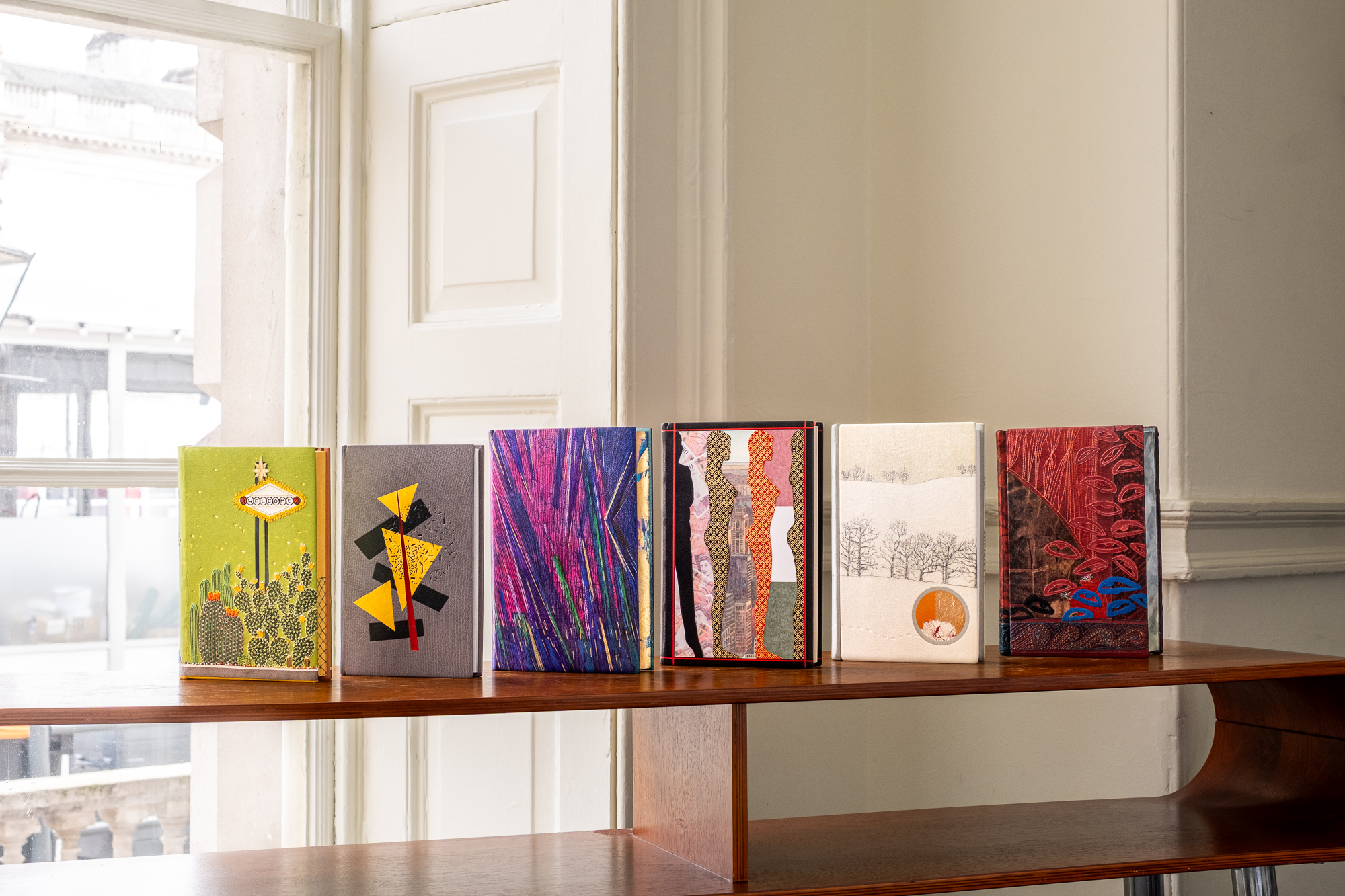
‘At the beginning, I have to read closely and take notes, making sketches and little trial pieces. It’s that first stage – reading and designing – that really takes a disproportionate amount of time.’ ‘Time’ is one of the key words in our conversation, given the short window each binder has to complete the entire project. Works are allotted to different designers immediately after the shortlist is announced and from there they have little over a month before the final product will be presented to their respective authors.
Given the pressure of the project, each year only 9 or 10 bookbinders put their names forward as candidates. ‘The people who don’t apply can’t deal with the pressure,’ says James. ‘For those that go through with it, it’s completely absorbing. As soon as your book arrives, you’re focussed. I’m often working late into the night and will wake up the next morning thinking about what I need to do next.’
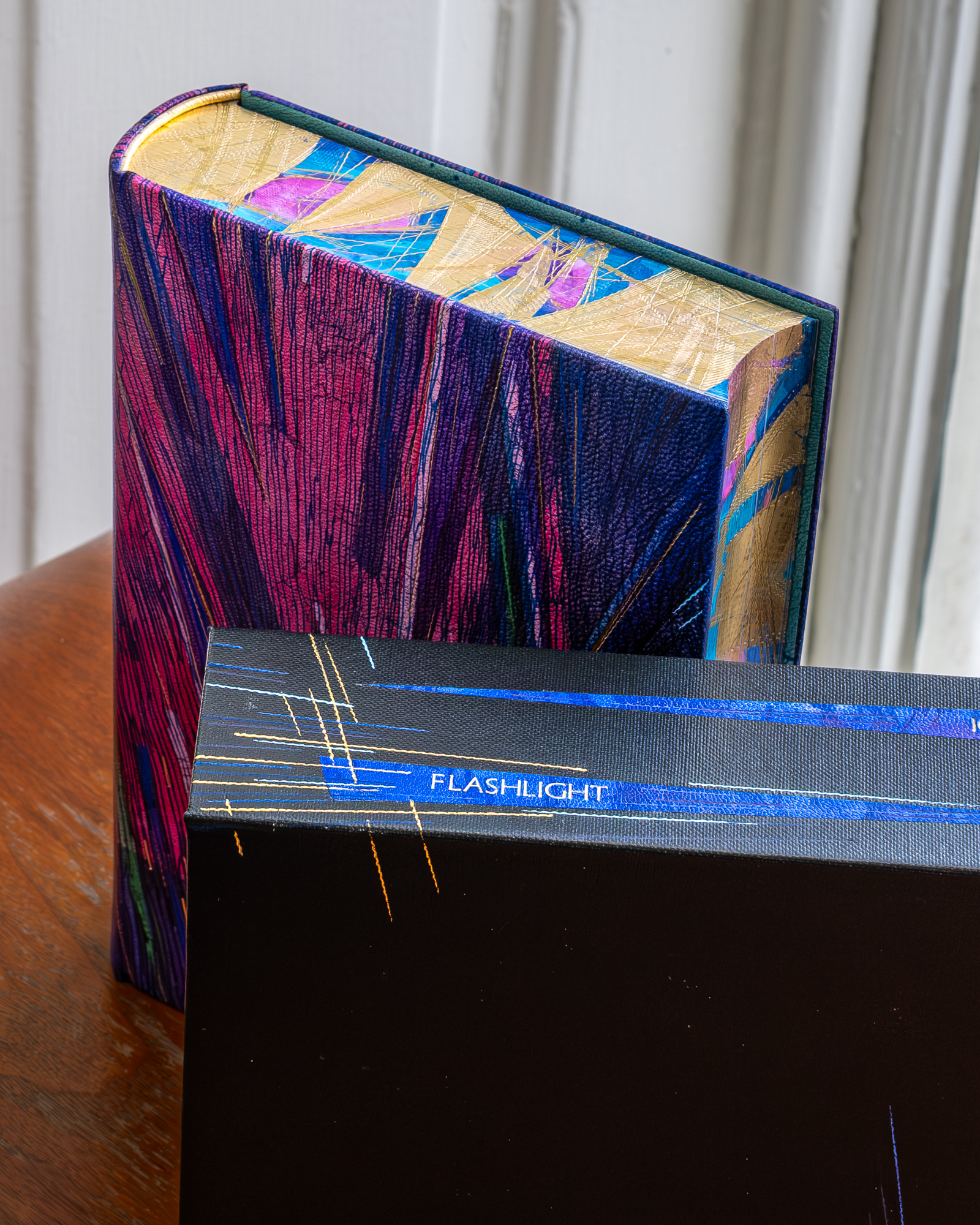
Bookbinding at this level is a highly technical labour of love. Another key consideration is what kind of materials you might want to use. James tells me that sourcing many things is fairly straightforward, although some particular kinds of suppliers are dying out now. ‘I don’t know if there are many places you can get your hands on pigskin anymore, and I’m not sure there’s a goldbeater left in this country,’ she explains. ‘But I can get goldleaf and goatskin or calfskin without trouble, so once you’ve made your decisions its fairly straightforward.’
Once the sheets are printed, they’re folded into sections, trimmed, and sewn together on tapes that connect the text block to the boards. The binder then rounds and backs the spine to create a smooth shoulder for the boards to sit against, before attaching the covers and adding hand-sewn headbands and leatherwork.
And yet time is only one of the pressures the designers contend with. ‘Usually the authors are delighted with the results, but not always. It’s often the case that what they expected is different to what has been presented to them. These novels have not been in the world long, so they really can feel like the writers’ babies. And sometimes you worry that you’re dressing their babies in clothes they wouldn’t be seen dead choosing.’
Receive our daily digest of inspiration, escapism and design stories from around the world direct to your inbox.
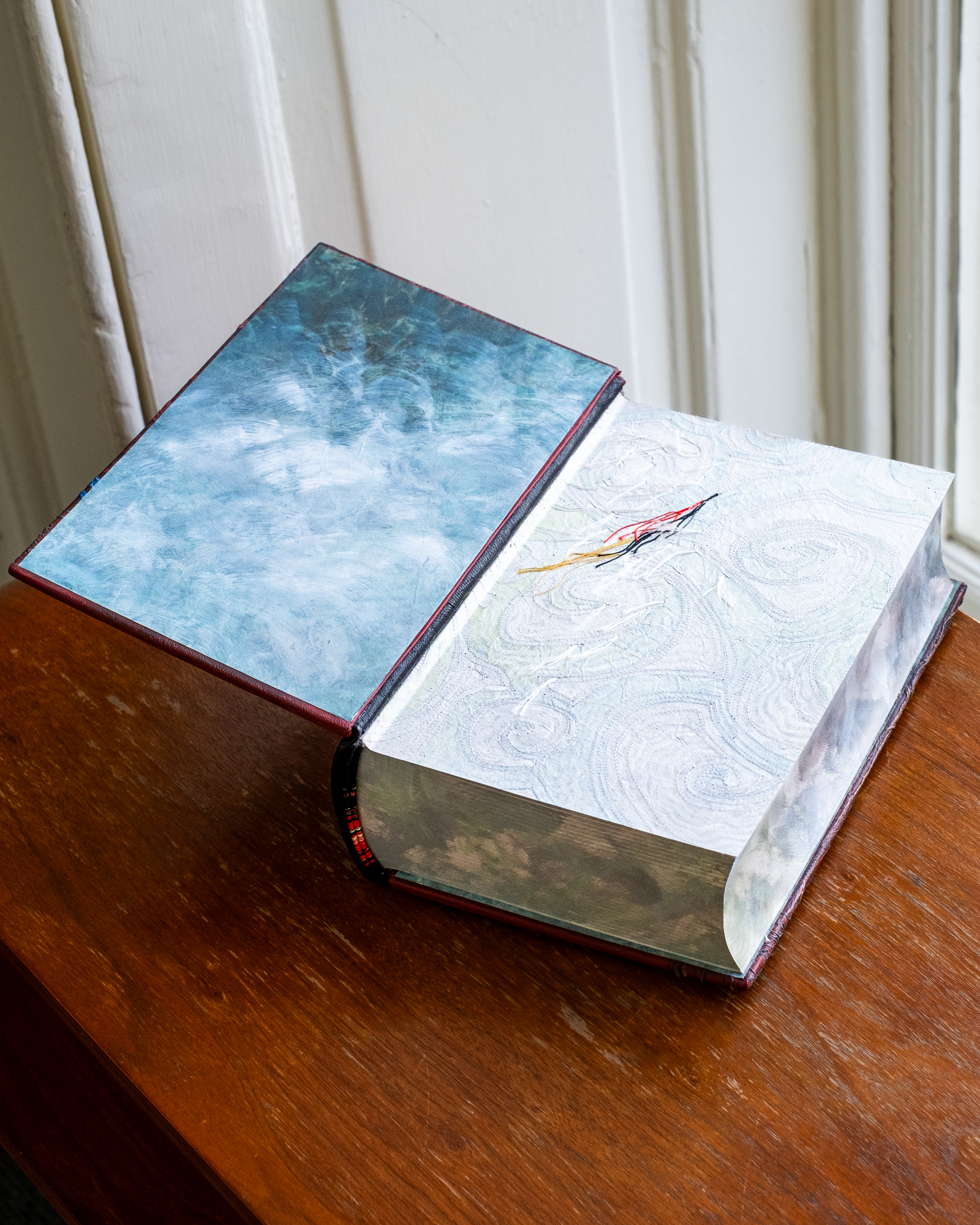
But this kind of bookbinding is rarely about just presenting the work nicely. It is also concerned with how the binder understands and reacts to the work. ‘What ‘I’m trying to do is distil the essence of the book, ‘ says James. ‘By the time we get to the ceremony and the dinner, you know that most people there will have read each work on the shortlist, and what I hope is that they look at my version and think “that absolutely sums up the story.” And that’s why it’s so much harder to bind a book when it’s one that doesn’t speak to you. In that situation you just have to find individual quotes or episodes in the story and try to draw an interpretation out of that.’
James’ career has spanned 40 years and her binding of the The Land in Winter will mark her 13th contribution to the Booker Prize bindings. Does she think the craft is undergoing a quiet resurgence? ‘It absolutely is. I was the last student to study bookbinding at Glasgow school of Art before the course closed down. And there’s only one full time course left in the country. But the enthusiasm for classes is enormous and people are realising just how addictive it is once you start. In fact, the idea of binding the shortlist came after the wife of the former chair of the Booker did a bookbinding class with someone in our Society.’
Having worked in a bookshop recently, it struck me that the interest in bookbinding might reflect a broader trend in contemporary publishing. Walk into any Waterstones now and you’ll find a section devoted to clothbound classics. ‘Yes, I think publishers are alive to it too,’ says James. ‘They’ve suddenly started putting a lot more effort into making their books look physically attractive.’
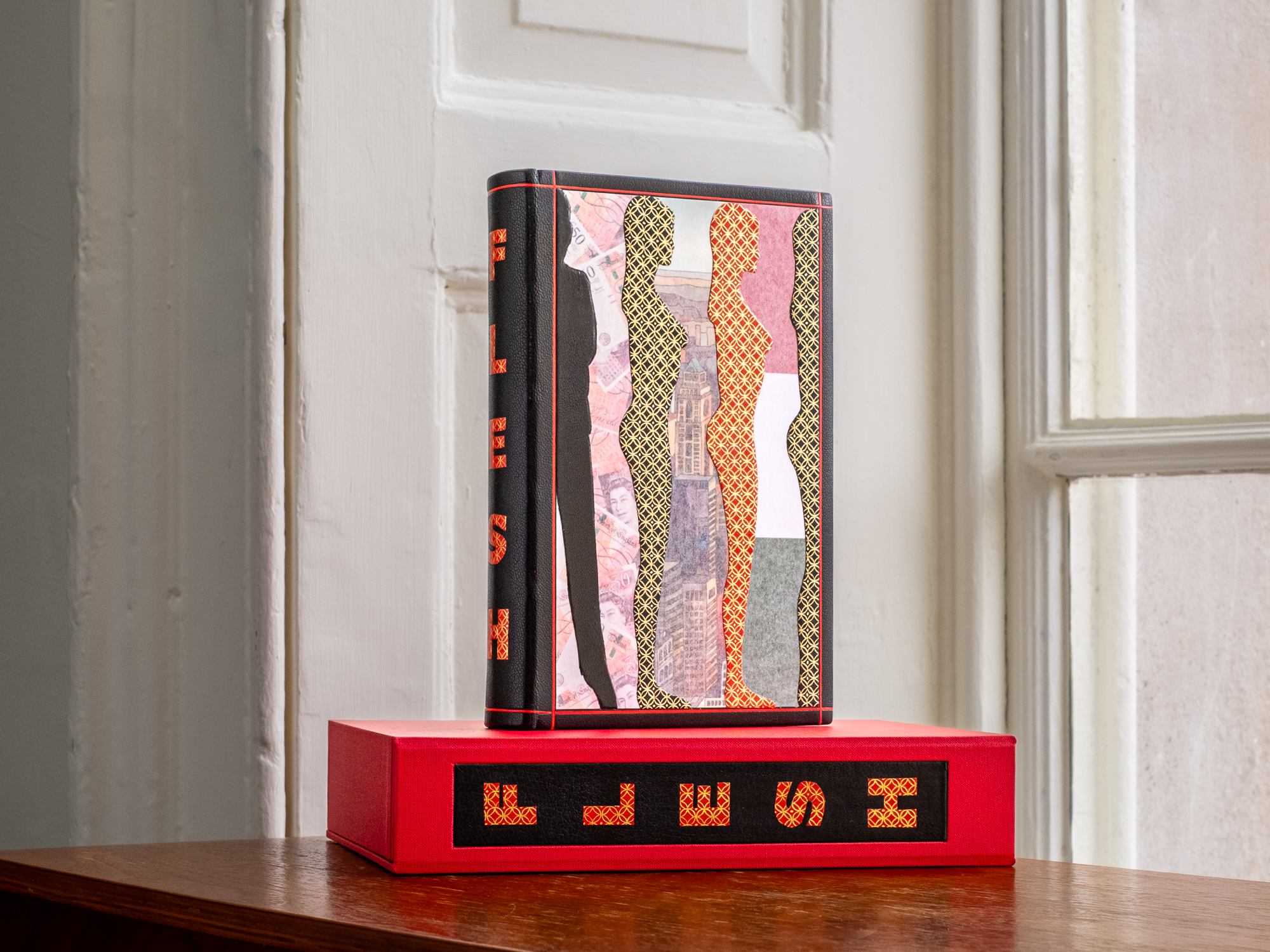
However, it’s not just about the artifact. ‘Books do suffer from the fact that you can’t hang them on a wall to impress your friends,’ says James, but that’s not a hindrance: ‘As with all applied art, the pleasure it gives isn’t one of just aesthetics. You’re enjoying the fact that it has been made by someone else.’
And for this bookbinder now is the time to pick up a beautiful book. ‘With books in particular, people are realising that reading on a screen is sterile. Interacting with a physical book changes the way you read. The feel of the object in your hands, the smell of the pages – that’s something quite special.’
-
 Volvo’s quest for safety has resulted in this new, ultra-legible in-car typeface, Volvo Centum
Volvo’s quest for safety has resulted in this new, ultra-legible in-car typeface, Volvo CentumDalton Maag designs a new sans serif typeface for the Swedish carmaker, Volvo Centum, building on the brand’s strong safety ethos
-
 We asked six creative leaders to tell us their design predictions for the year ahead
We asked six creative leaders to tell us their design predictions for the year aheadWhat will be the trends shaping the design world in 2026? Six creative leaders share their creative predictions for next year, alongside some wise advice: be present, connect, embrace AI
-
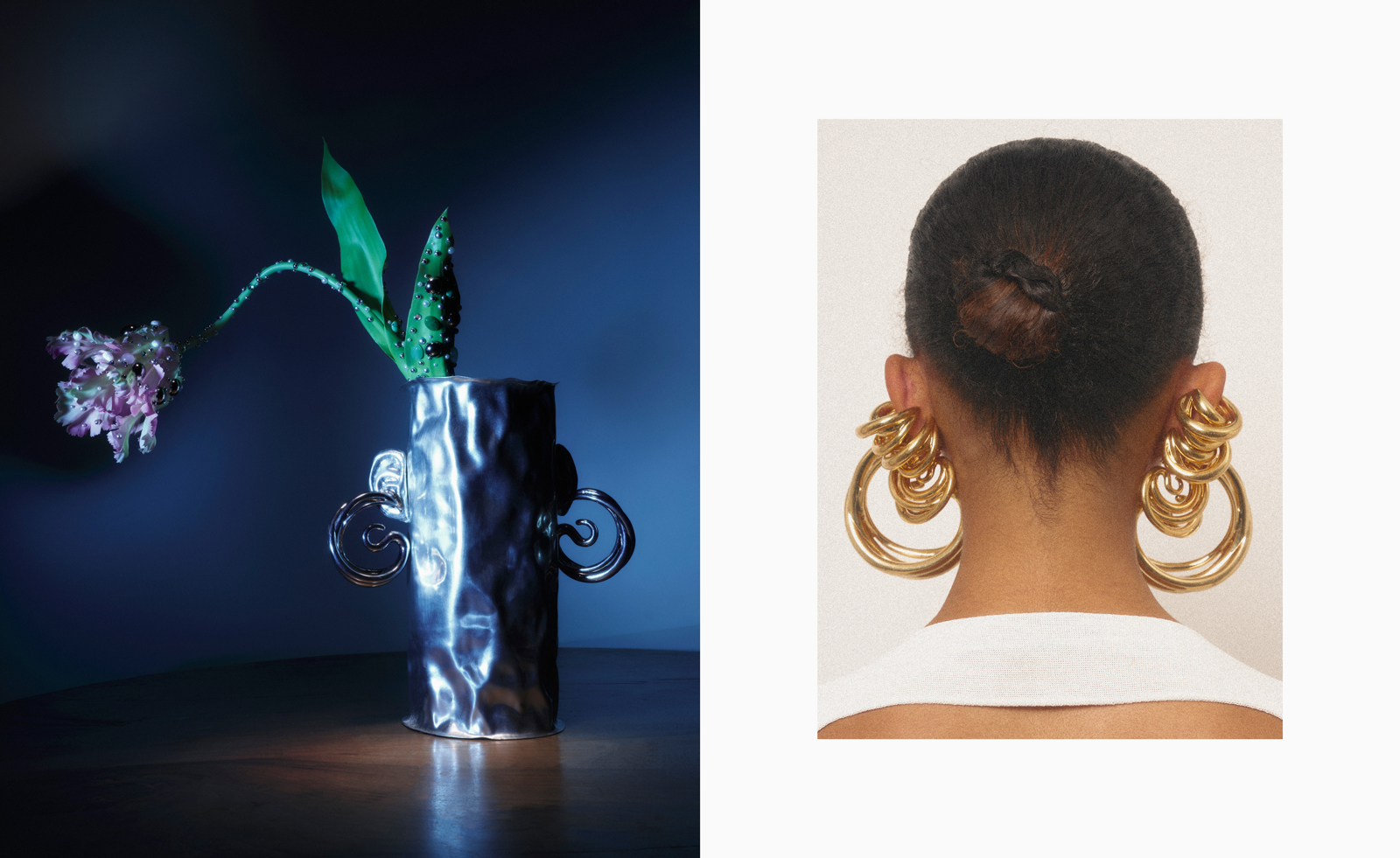 10 watch and jewellery moments that dazzled us in 2025
10 watch and jewellery moments that dazzled us in 2025From unexpected watch collaborations to eclectic materials and offbeat designs, here are the watch and jewellery moments we enjoyed this year
-
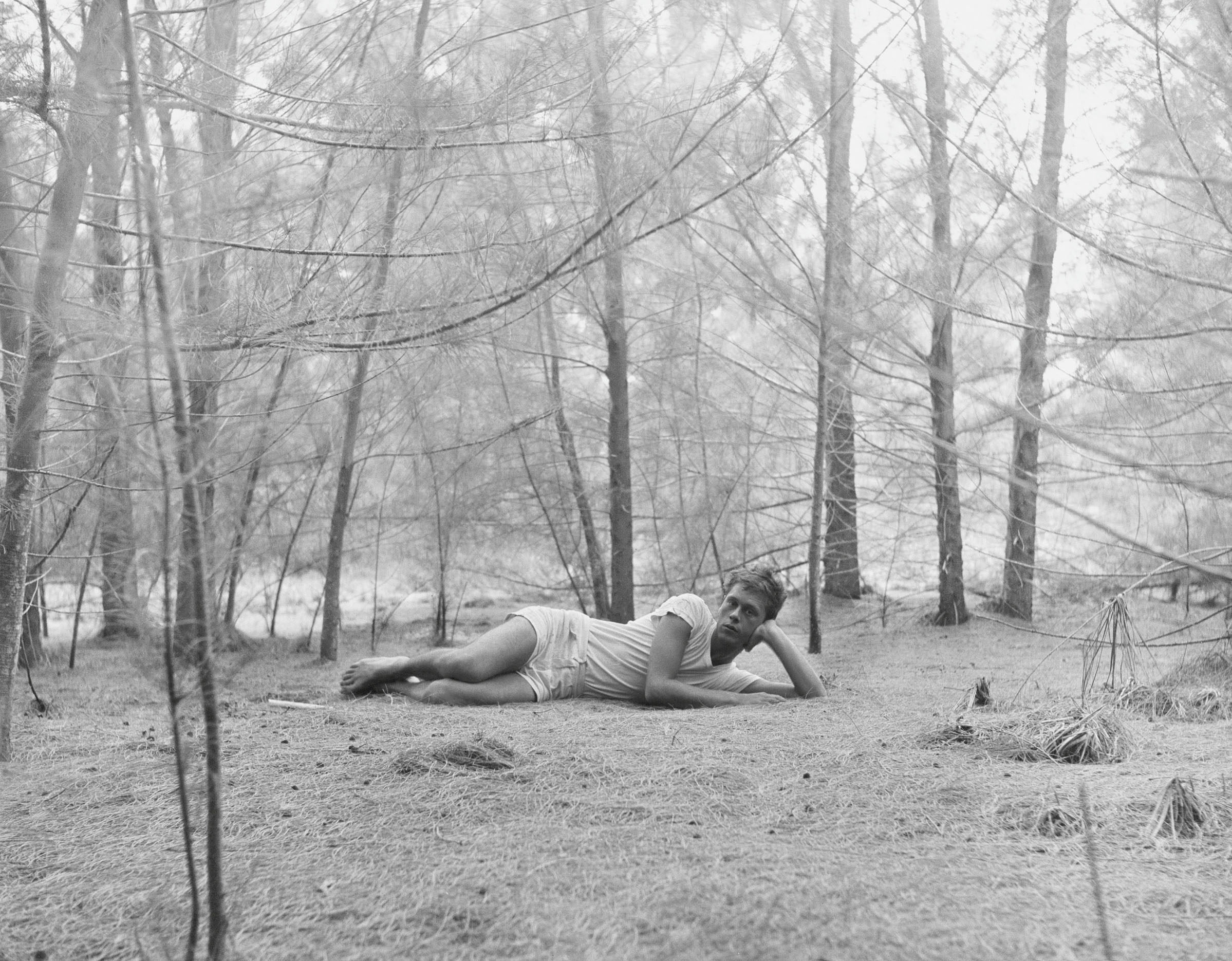 Inside the seductive and mischievous relationship between Paul Thek and Peter Hujar
Inside the seductive and mischievous relationship between Paul Thek and Peter HujarUntil now, little has been known about the deep friendship between artist Thek and photographer Hujar, something set to change with the release of their previously unpublished letters and photographs
-
 Nadia Lee Cohen distils a distant American memory into an unflinching new photo book
Nadia Lee Cohen distils a distant American memory into an unflinching new photo book‘Holy Ohio’ documents the British photographer and filmmaker’s personal journey as she reconnects with distant family and her earliest American memories
-
 Out of office: The Wallpaper* editors’ picks of the week
Out of office: The Wallpaper* editors’ picks of the weekThe rain is falling, the nights are closing in, and it’s still a bit too early to get excited for Christmas, but this week, the Wallpaper* team brought warmth to the gloom with cosy interiors, good books, and a Hebridean dram
-
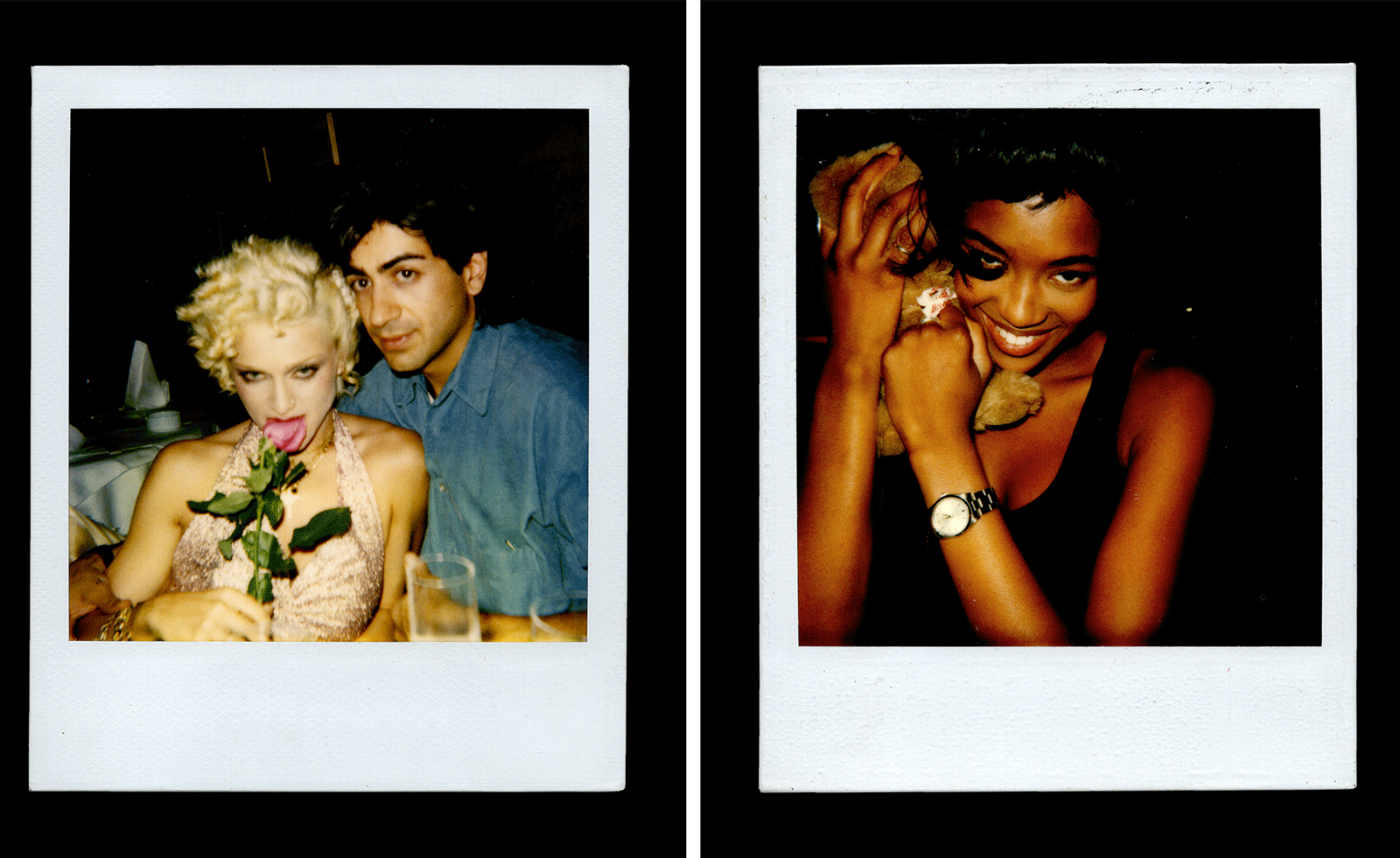 Inside Davé, Polaroids from a little-known Paris hotspot where the A-list played
Inside Davé, Polaroids from a little-known Paris hotspot where the A-list playedChinese restaurant Davé drew in A-list celebrities for three decades. What happened behind closed doors? A new book of Polaroids looks back
-
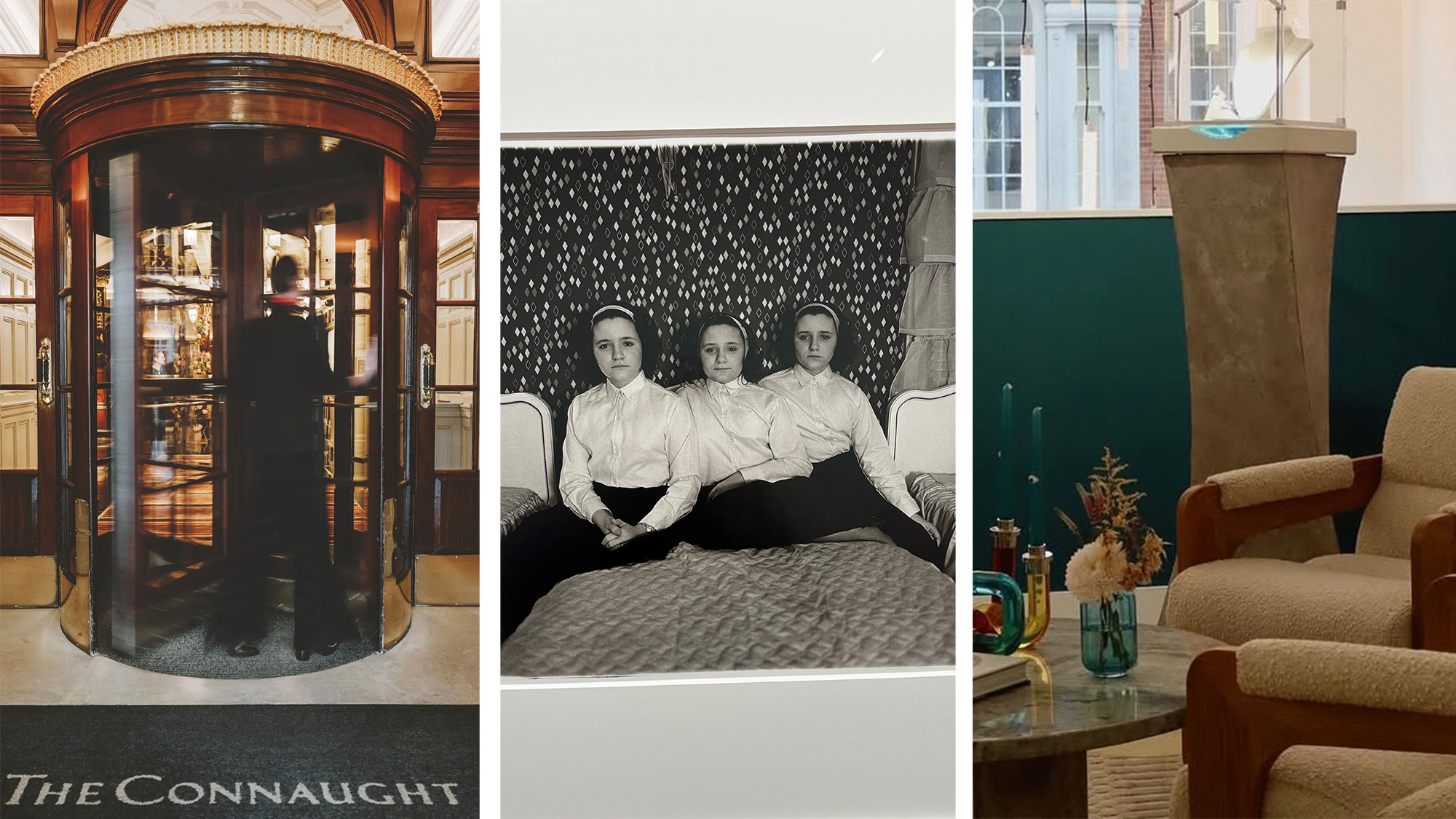 Out of office: The Wallpaper* editors’ picks of the week
Out of office: The Wallpaper* editors’ picks of the weekThis week, the Wallpaper* editors curated a diverse mix of experiences, from meeting diamond entrepreneurs and exploring perfume exhibitions to indulging in the the spectacle of a Middle Eastern Christmas
-
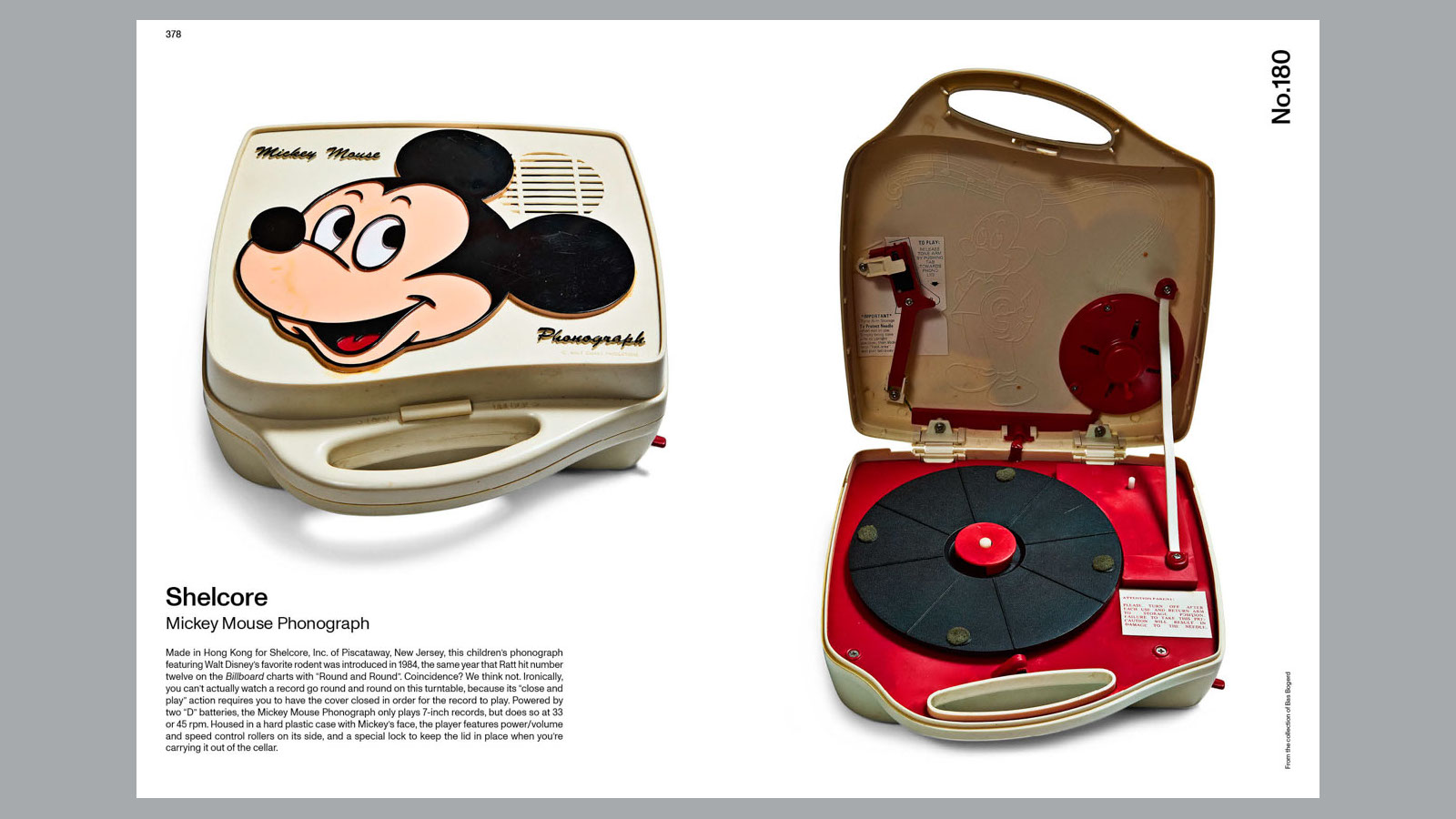 14 of the best new books for music buffs
14 of the best new books for music buffsFrom music-making tech to NME cover stars, portable turntables and the story behind industry legends – new books about the culture and craft of recorded sound
-
 Jamel Shabazz’s photographs are a love letter to Prospect Park
Jamel Shabazz’s photographs are a love letter to Prospect ParkIn a new book, ‘Prospect Park: Photographs of a Brooklyn Oasis, 1980 to 2025’, Jamel Shabazz discovers a warmer side of human nature
-
 A life’s work: Hans Ulrich Obrist on art, meaning and being driven
A life’s work: Hans Ulrich Obrist on art, meaning and being drivenAs the curator, critic and artistic director of Serpentine Galleries publishes his memoir, ‘Life in Progress’, he tells us what gets him out of bed in the morning